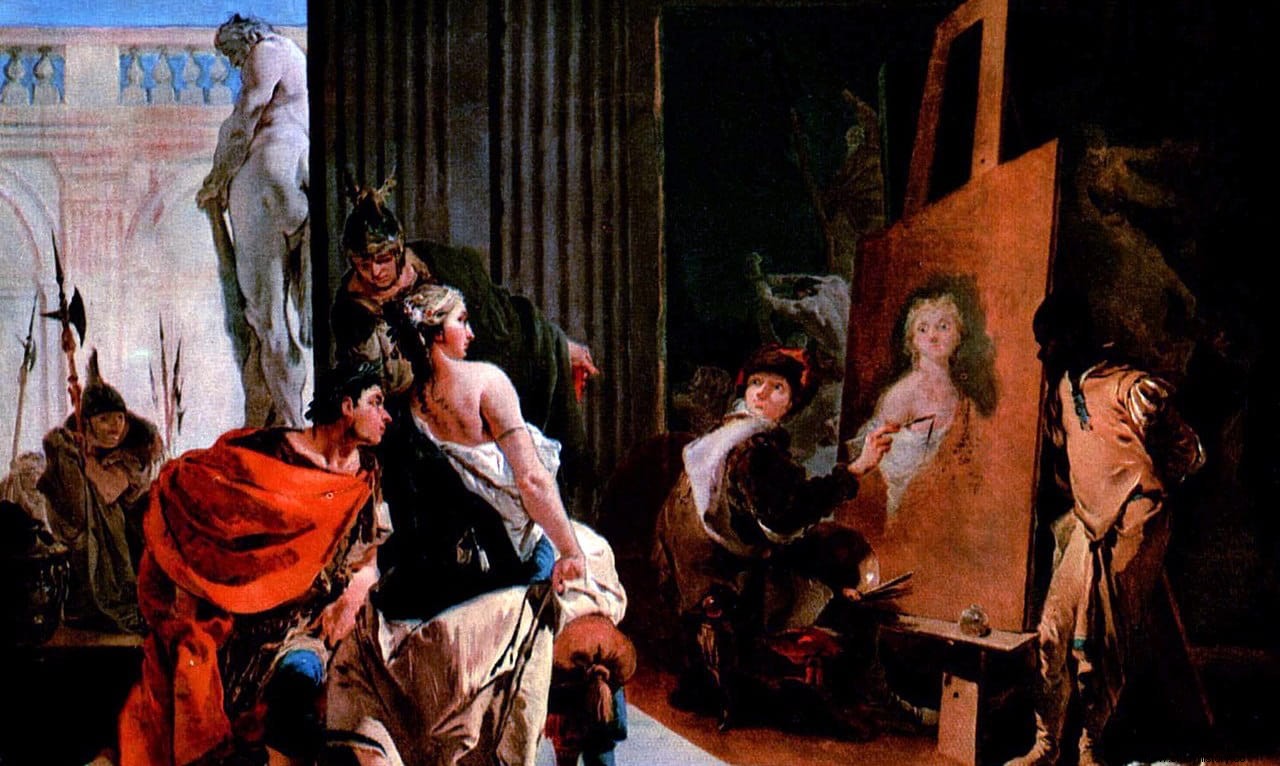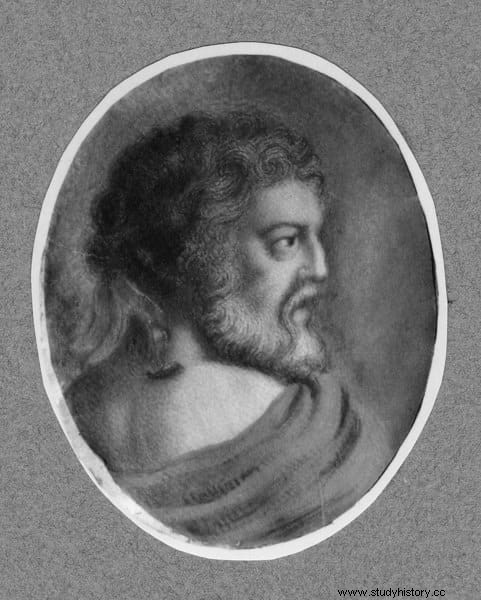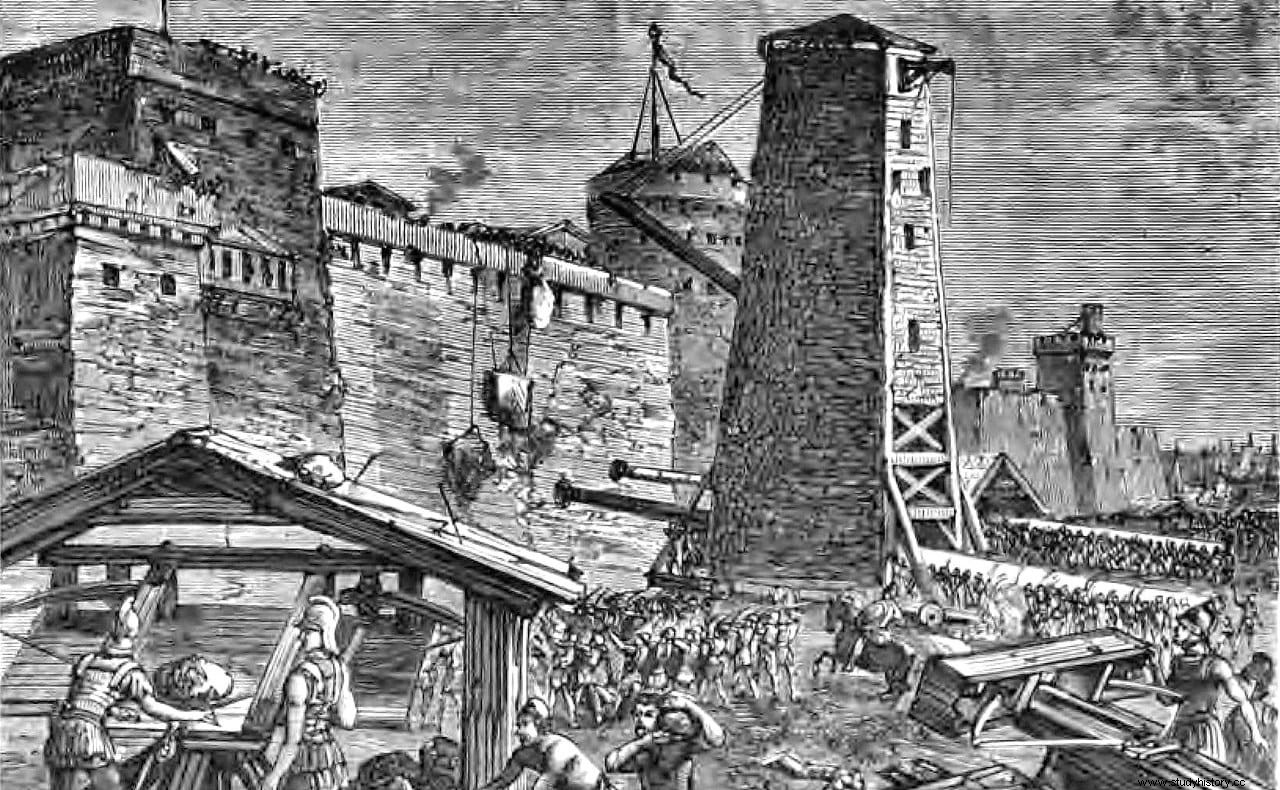Among the many painters who worked in the Hellenic world during the fourth century B.C. there are two that stand out for the fame of their works, and also for their friendship and rivalry. They are Apelles and Protogenes.
Apelles was Alexander the Great's favorite painter whom, according to sources, he used to visit in his workshop, and the only one he allowed to portray him. Protogenes, who was born in Caria, on the southwestern coast of Anatolia, worked mainly on the island of Rhodes, where he lived practically all his life, and if we listen to Pliny the Elder he was also a sculptor.
It must be remembered that the Hellenistic painters knew the tricks of perspective, foreshortening and lighting, and had reached a degree of realism possibly similar to that of sculpture.

His paintings, which used to take years to finish, decorated the sanctuaries, the interior of the temples and the most important public buildings of the Greek cities. Pausanias tells us, for example, that a painting of the thesmothetae (the six minor archons of Athens, who dealt with the laws) painted by Protogenes could be seen in the room of the Boulé, the governing body of Athens.
According to Pliny the Elder, in the Propylaea of the Acropolis there was also a painting by Protogenes in which two of the sacred ships of Athens were represented, the Paralo and the Ammonias (probably referring to the Salamis), triremes that were used in religious functions and diplomatic courier. Athens is thus the only city to which Protogenes is known to have traveled to carry out this work in situ.
Apelles must have been so good at his art that he could afford to praise and help other painters. He recognized, for example, that Melantio surpassed him in composition and Asclepiodorus in perspective. So hearing that his greatest rival Protogenes, who was already fifty years old, was living in poverty supporting himself by painting ships, he embarked for Rhodes.

Arriving at Protogenes's studio, and finding himself absent, he met an old woman who asked whom he should announce when the painter returned. Apelles took a brush and drew a thin contour line on a panel. When Protogenes returned the old woman she could not tell him who had come to visit him, but seeing the painted line and her great delicacy, he knew that only Apelles could have done it.
So she took a brush and drew within it an even finer line, but in a different colour, dividing Apelles's in two, telling the woman to show it to the stranger if she came back. So it was, Apelles returned and marveled at the skill of Protogenes. But he again drew a third line within the other two, so fine that when Protogenes came back and saw it he had to admit Apelles's superiority, so he ran to the harbor to meet him before he left.
That panel was passed down as a masterpiece from generation to generation until it was purchased by Julius Caesar, disappearing forever during the fire of his palace on the Palatine. It could be thought that it is only a legend, if it were not for the fact that Pliny the Elder was still able to contemplate it.
Apelles asked Protogenes how much he wanted for some of his paintings, to which Protogenes replied with a modest sum. Apelles, however, offered him the hefty sum of 50 talents (according to modern calculations, approximately one million in today's dollars). Then he spread the word that he intended to resell the paintings as his own.
The Rhodians realized the value that the works of Protogenes must have and bought them paying more than what Apelles had offered, preserving them from then on among the treasures of the city. But how good was Protogenes at painting?
Strabo says that on one occasion he had painted a satyr next to which he drew a partridge so realistically that people just looked at her, and even real partridges called her. So that the view does not deviate from the satyr, which was his main motive, he deleted the partridge from the painting.

When he painted his picture of the hero Ialysus (the mythical founder of the city of Ialysos in Rhodes) he applied four layers of paint so that when time wore away the top layer the colors would remain fresh and clear. In that same frame, angered by his inability to realistically represent the foam from the mouth of Ialiso's dog, he lost his temper and began to erase it with a sponge, producing the effect he was looking for.
But perhaps the best known episode in the life of Protogenes occurred during the siege of the Macedonian king Demetrius Poliorcetes on Rhodes. As the battle raged, he continued to work in the garden of his study, which was directly in the line of the Macedonian advance.
Informed Demetrius sent for him and asked him why he had not taken refuge behind the walls with the others, to which Protogenes replied: because I know you are waging war against the Rhodians and not against the arts . Demetrius then posted guards to protect him, and changed the direction of their advance so as not to disturb him.

According to what Plutarch tells us, the painting that Protogenes was working on at that time was that of Ialiso, and that is why the Rhodians would have sent heralds to ask Demetrius not to destroy it.
This painting, which took seven years to paint, was still on Rhodes in the time of Augustus, where Cicero saw it. One or two generations later, at the time of Pliny the Elder, it had already been transferred to Rome and placed in the Temple of Peace.
Given the time he spent on each of them, the number of Protogenes's works was, according to Pliny, comparatively small. Among those he mentions as his are a portrait of Aristotle's mother and another, the last one he painted, entitled Alexander and Pan , the only one in which he portrayed the Macedonian conqueror.
No copy of his works has survived to this day, as has happened in the case of other painters, whose works have been found reproduced, already in Roman times, in Pompeii frescoes or in mosaics.
